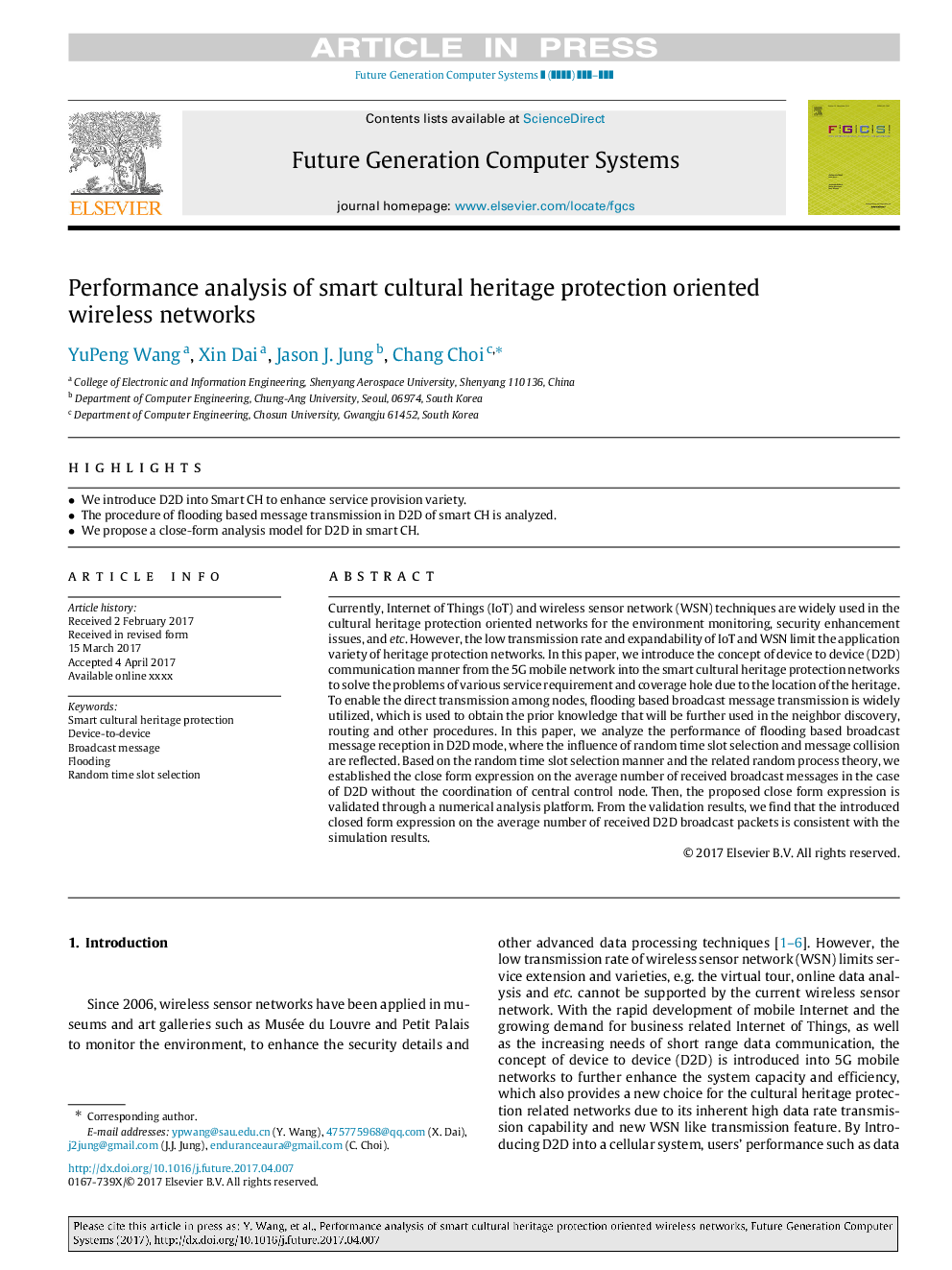| Article ID | Journal | Published Year | Pages | File Type |
|---|---|---|---|---|
| 6873303 | Future Generation Computer Systems | 2018 | 8 Pages |
Abstract
Currently, Internet of Things (IoT) and wireless sensor network (WSN) techniques are widely used in the cultural heritage protection oriented networks for the environment monitoring, security enhancement issues, and etc. However, the low transmission rate and expandability of IoT and WSN limit the application variety of heritage protection networks. In this paper, we introduce the concept of device to device (D2D) communication manner from the 5G mobile network into the smart cultural heritage protection networks to solve the problems of various service requirement and coverage hole due to the location of the heritage. To enable the direct transmission among nodes, flooding based broadcast message transmission is widely utilized, which is used to obtain the prior knowledge that will be further used in the neighbor discovery, routing and other procedures. In this paper, we analyze the performance of flooding based broadcast message reception in D2D mode, where the influence of random time slot selection and message collision are reflected. Based on the random time slot selection manner and the related random process theory, we established the close form expression on the average number of received broadcast messages in the case of D2D without the coordination of central control node. Then, the proposed close form expression is validated through a numerical analysis platform. From the validation results, we find that the introduced closed form expression on the average number of received D2D broadcast packets is consistent with the simulation results.
Keywords
Related Topics
Physical Sciences and Engineering
Computer Science
Computational Theory and Mathematics
Authors
YuPeng Wang, Xin Dai, Jason J. Jung, Chang Choi,
